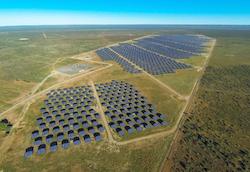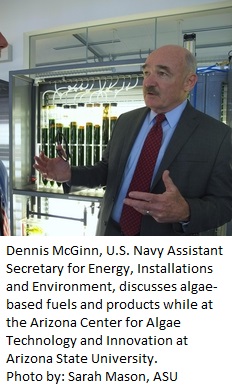In what could be an unprecedented move by the U.S. Environmental Protection Agency (EPA), the agency has released a proposed plan to reduce carbon pollution from existing power plants by 30 percent nationwide below 2005 levels by 2030. The Clean Power Plan is the first proposed policy that would cut CO2 from existing power plants – the single largest source of carbon pollution in the U.S. Possible solutions to cutting carbon include integrating renewable power to the grid from sources such as geothermal, solar, wind and bioenergy (biomass or pellets derived from waste).
According to the EPA, power plants account for nearly one-third of all domestic greenhouse gas emissions (GHG). Although there are current limits in place for the level of arsenic, mercury, sulfur dioxide, nitrogen oxides, and particle pollution that power plants can emit, there are currently no national limits on carbon pollution levels.
 “Climate change, fueled by carbon pollution, supercharges risks to our health, our economy, and our way of life,” said EPA Administrator Gina McCarthy. “EPA is delivering on a vital piece of President Obama’s Climate Action Plan by proposing a Clean Power Plan that will cut harmful carbon pollution from our largest source–power plants.”
“Climate change, fueled by carbon pollution, supercharges risks to our health, our economy, and our way of life,” said EPA Administrator Gina McCarthy. “EPA is delivering on a vital piece of President Obama’s Climate Action Plan by proposing a Clean Power Plan that will cut harmful carbon pollution from our largest source–power plants.”
“By leveraging cleaner energy sources and cutting energy waste, this plan will clean the air we breathe while helping slow climate change so we can leave a safe and healthy future for our kids. We don’t have to choose between a healthy economy and a healthy environment–our action will sharpen America’s competitive edge, spur innovation, and create jobs,” added McCarthy.
Building upon trends already underway to reduce GHG emissions (including carbon) in other industry sectors including the transportation sector (cars, planes, etc.) as well as working along side states who have already put carbon policies in place for their utility sectors, the goal is to create a nationwide plan to cut pollution while make power plants more energy efficient. In addition, the plan fits within the steps laid out in President Obama’s Climate Action Plan and his June 2013 Presidential Memorandum.
In 2009, the EPA determined that greenhouse gas pollution threatens Americans’ health and welfare by leading to long lasting changes in our climate that can have a range of negative effects on human health and the environment. By 2030, The Clean Power Plan specifically calls for:
- Cutting carbon emission from the power sector by 30 percent nationwide below 2005 levels, which is equal to the emissions from powering more than half the homes in the United States for one year;
- Cutting particle pollution, nitrogen oxides, and sulfur dioxide by more than 25 percent as a co-benefit;
- Avoiding up to 6,600 premature deaths, up to 150,000 asthma attacks in children, and up to 490,000 missed work or school days—providing up to $93 billion in climate and public health benefits; and
- Shrink electricity bills roughly 8 percent by increasing energy efficiency and reducing demand in the electricity system.
Read More
 As Minnesota gets ready to become the first state in the nation to require a 10 percent blend of biodiesel, B10, the folks at the American Lung Association in Minnesota wants everyone to be properly prepared. That’s why they set up a series of free workshops, B Ready For B10.
As Minnesota gets ready to become the first state in the nation to require a 10 percent blend of biodiesel, B10, the folks at the American Lung Association in Minnesota wants everyone to be properly prepared. That’s why they set up a series of free workshops, B Ready For B10.









